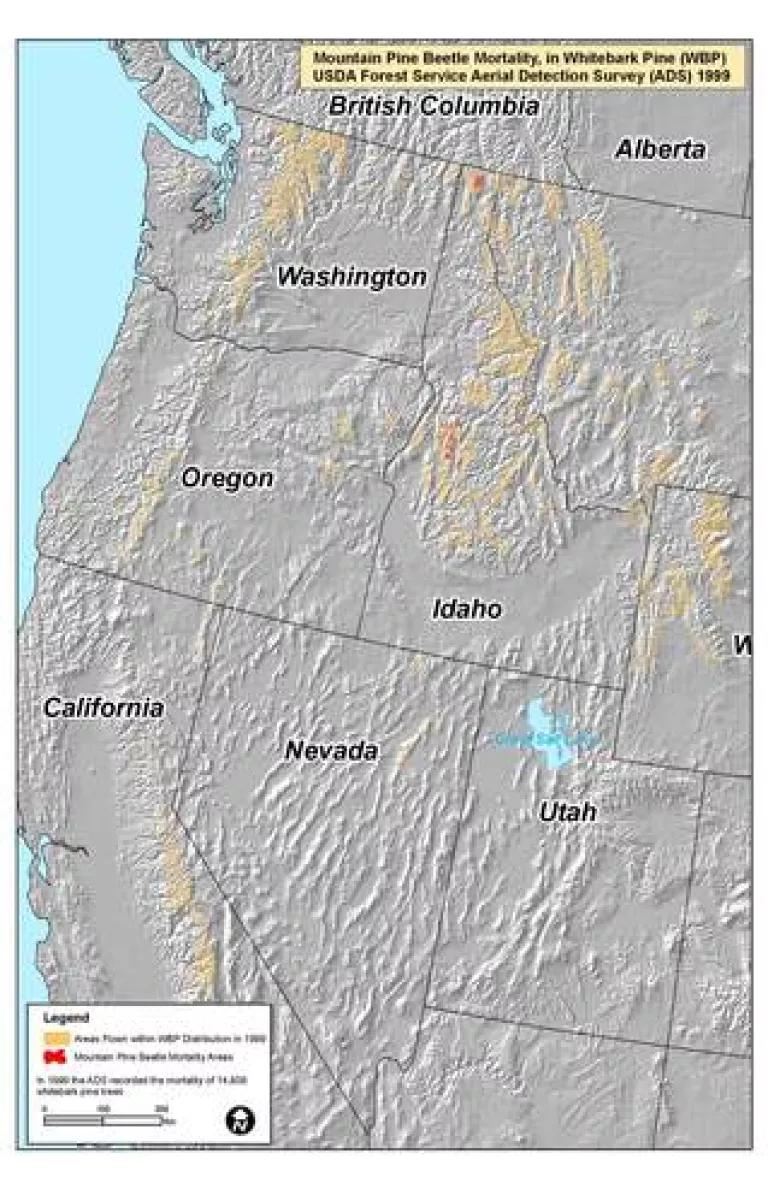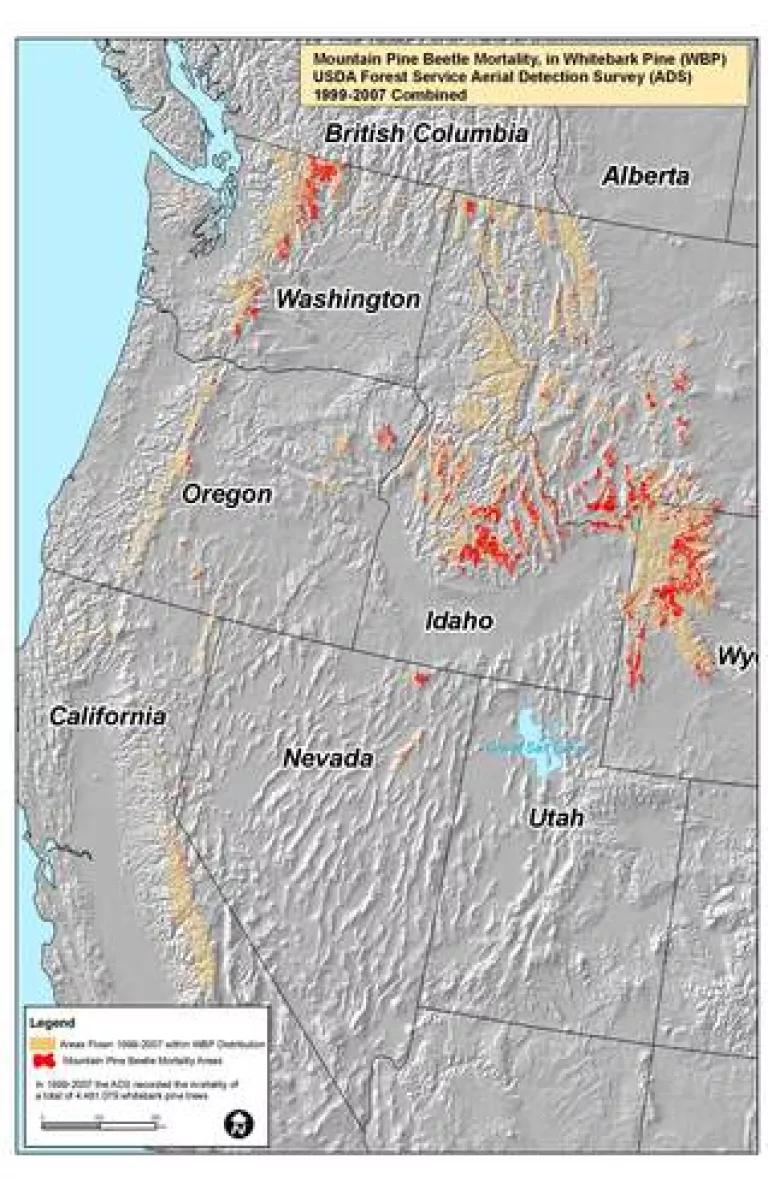
Its not just any tree - you can tell from this picture. As my colleague, Niel Lawrence, remarked, it looks like a sylvan Oberon, King of the Fairies, sneaking up on Titania. Found in harsh, high elevation locations in the western US and Canada, whitebark pine may not be well known by many, but this spritely-looking tree is indeed the king of its ecosystem. Unfortunately, it has fallen victim to a perfect storm of forces that are now putting whitebark pine's reign in question.
Many of these trees are currently infected with a fungus called blister rust that specifically targets white pines. It was accidentally introduced from Europe by foresters in the late 1800s and has plagued whitebark pine ever since - slowly establishing itself throughout the species' entire range. More recently, in response to increasing temperatures, mountain pine beetles have begun expanding their range. These beetles typically have not been able to survive the cold environment of the high-elevation alpine forests, but as winter temperatures become milder the beetles are moving higher up. This means that while mountain pine beetles are a native insect, they act as an invasive species as they exploit whitebark pine as a new host that lacks the defenses to fight off the beetle attacks. Both blister rust and the pine beetles cause red pine needles called 'flags' that ultimately indicate dead and dying trees and we are beginning to see entire forests changing hue.
Aerial survey data over the last decade has documented a tremendous increase in these red trees throughout whitebark pine's range. Below is an aerial survey of dead whitebark pine from 1999 followed by one from 2007.


On top of this, trees are relatively immobile species in the sense that they cannot move, though their seeds can. They are also slow growing and may take more than half a century to start producing large cone crops. These attributes make high-elevation species like whitebark pine especially vulnerable to accelerating climate changes that threaten to move the conditions that support these trees right off the landscape.
But why do we care about this tree that has no commercial value and occurs in areas that few humans inhabit?
Whitebark pine is hailed as both a foundation and keystone species which means that it facilitates the existence of other species, thereby boosting biodversity by regulating and stabilizing fundamental ecosystem processes. For example, as an early colonizer to harsh, alpine habitat, whitebark pine provides shelter and windbreaks making the environment more hospitable for other plant life and animals. At its high elevation, the shade of whitebark pine trees slows the melting of snow and its roots stabilize the soil thereby moderating the runoff of snowmelt to reduce spring-time flooding and provide higher stream flows during summer months at lower elevations. Whitebark pine, which produces seeds that are high in fat content, is also an important food source for all kinds of wildlife from birds and squirrels to grizzlies and black bears. The loss of this tree would have profound impacts beyond its high-elevation enclave - affecting all of the services it provides throughout its ecosystem including the other plant and animal life it supports.
The threats that whitebark pine is facing today qualify it for protection under the Endangered Species Act which is why we have filed a petition with the US Fish and Wildlife Service asking them to protect the species from extinction. It is somewhat unusual to protect such a wide ranging tree, but this case is overwhelming. Fortunately, there is some indication that restoration of this important species may be possible - but we'll have to act quickly if we are to save this dynasty from ruin.

